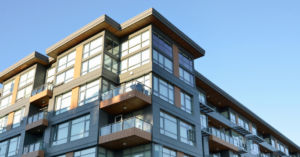SF-BTR Industry Building Steam
The single-family built-to-rent (SF-BTR) sub-sector of the housing market is garnering a good bit of attention of late for several reasons. First, it is a relatively new category within the housing universe having only been around in any substantive way for about five years. Second, interest in this sector has taken off rapidly since the start of the pandemic and SF BTR communities can now be found in many markets across the south and south western regions of the United States. Finally, renter demand for this property segment has picked up materially in recent years to serve members of the millennial and generation Z demographic for whom traditional apartment living may no longer appeal or they are not quite willing or able to transition into home ownership. The pace of deliveries and construction starts has been picking up and institutional capital has identified this product type as an attractive investment.
Unit Starts Close to 20% Annum
According to industry specialist, Northmarq, there are currently approximately 500 SF-BTR communities across 20 states and 2021 completions are up around 5% with a spike in unit starts of close to 20%. From 2017-2019, starts averaged 43,000 homes per year with 2020 seeing starts spike to 49,000 units per annum. 2021 starts reached nearly 60,000 homes. Estimates are calling for starts to approach 70,000 units in 2022 and by 2025 forecasts are for upwards of 100,000 units per year.[1]
Investment Sales Increase Alongside Unit Starts
The investment sales market has also been picking up for this sub-sector. $2.3 billion of product changed hands in 2021 with a bulk of this transaction activity coming in the fourth quarter. 2022 sales activity is off to a slow start, which can partly be attributed to the rise in financing costs since the start of the year, but it is also likely that activity will accelerate as the year progresses. Many deals tend to be “backend weighted” as it relates to the calendar. Cap rates for this category tend to fall between traditional apartments and traditional single-family rentals. Thus, transactions were pricing in early 2021 in a range of 4-4.5% and tightened to 3-3.5% late in the year as activity picked up.[2]
Pandemic Attributes to the Increase in SF-BTR Popularity
Factors contributing to the popularity of the sector include a growing number of older and more affluent renters along with a desire for more privacy and less dense living conditions as the pandemic took hold. This product typically provides more living space than traditional apartments, which bodes well for work-from-home and hybrid work enthusiasts. The term “renter by choice” is also used to describe the SF-BTR tenant as these households have multiple lifestyle options at their disposal and choose this product type for its flexibility, amenities which typically include pools and club houses and low or no maintenance living wherein both interior and exterior maintenance is included in the rent. The high and rising cost of homeownership is also a likely factor in the equation.
REITs Begin to Enter the SF-BTR Category
One recent example of traditional apartment REITs making an entry into the SF-BTR category was an announcement by Independent Realty Trust (IRT) which recently announced a joint venture agreement for an equity stake in Virtuoso Living, a two-phase horizonal multifamily development in Huntsville, AL with 400 purpose-built rentals all within one community. The total project is expected to cost $127 million, or approximately $318,000 per unit. IRT’s investment is 90% of the joint venture equity and they have the right to manage and/or acquire the community once it reaches 95% occupancy. Phase 1 (178 homes) is currently 85% occupied with a monthly rent of $1,560. Phase 2 (222 homes) is under construction and scheduled for completion around mid-2022.[3]
Battling the Pandemic Hindered Economy
Even with the pace of starts and deliveries moving higher in 2022, supply is expected to fall short of demand for this versatile form of rental housing. Also, supply chain constraints and limited access to labor are pushing out completion dates across most regions. The primary short-term risk to developers and investors is the overall health of the economy which appears to be reaching an inflection point with inflation weighing on businesses and consumers alike. To date, tenants have been able to absorb rent increases in part due to the vibrant job market which has led to rising wages. Demographic trends should continue to favor rental housing for years to come as renters are tending to stay in place longer and SF-BTR provides a flexible alternative to traditional apartment living that allows for larger households, more privacy and hybrid work.
Footnotes:
[1] Northmarq: Special Report – Single-family Build-To-Rent Properties; May 2022
[2] NorthMarq
[3] Independence Realty Trust: First Quarter 2022 Presentation
Investors should consider the investment objectives, risks, charges and expenses carefully before investing. For a prospectus or summary prospectus with this and other information about the Fund, please call (800) 693- 8288 or visit our website at www.armadaetfs.com. Read the prospectus or summary prospectus carefully before investing.
Investments involve risk. Principal loss is possible
Distributed by Foreside Fund Services, LLC.



